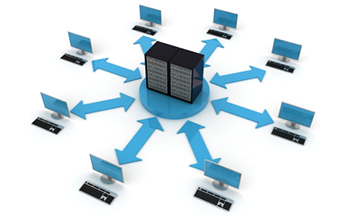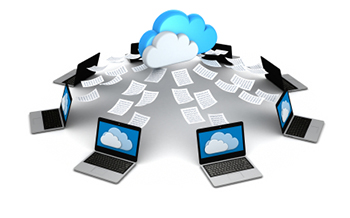
Why Hybrid Clouds are More Than Just Another Trend
It should come as no surprise that many small to midsize business owners take pride in overseeing every aspect of their startup business. Naturally, many are apprehensive when it comes to surrendering control of their servers, their data, and their applications.
The downside of this need for control is that operating and maintaining everything onsite can be time consuming, super expensive, and it can make your business more vulnerable to failure related downtime and cyber threats.
Although everything can be stored in the cloud at a fraction of the cost, many aren’t responsive to the idea of sharing the infrastructure their technology runs on.
The great thing about the cloud is it’s not an all or nothing thing. This is exactly why so many small to midsize businesses have turned to hybrid cloud solutions. Just as they name implies, hybrid cloud solutions are both on and off premises. It’s the best of both worlds. An entrepreneur can still control certain aspects of the business on-site, but simultaneously exploit the cloud’s cost effectiveness and overall scalability.
For example, a local server can be housed and managed on-site but that server, or just specific files, can still be backed up in the cloud and stored far away off-site. This provides a partial disaster recovery solution in the event of a hurricane, flood, fire, or just a basic server crash.
Here are some tips for developing your hybrid cloud strategy
- Honestly assess the current IT strategy – Over time, as your business grows and technology advances, your well-planned and neatly arranged IT infrastructure transforms into a disorganized mishmash of different servers and disconnected software and tools. View this almost as the spring-cleaning of a cluttered garage. What systems or applications are critical to your business right now and which ones no longer support your current or future business initiatives?
- Know what you want to keep close – Every business will be different in this regard. Certain companies will prefer keeping large files in-house, in a more controlled private cloud for easy access, but may be okay with having their emails out there in the cloud.
- See how others are leveraging a hybrid cloud environment – Services once only available to large enterprises are now available to SMBs. This presents an extraordinary opportunity to be more agile, flexible, and better suited for new business opportunities and growth. Remote monitoring, 24/7 support, and disaster recovery solutions can be easily integrated within a hybrid-computing environment – regardless of operating systems, server types, or mobile devices used.
- Staged implementation – Be sure to plan your hybrid cloud strategy as a multi-year plan that is deployed in phases. For example, in the beginning, private controlled access to a public cloud service can be granted to internal application developers experimenting with a new business initiative. Or a new customer relations management SaaS (Software as a Service) application can be implemented.
This is the year that even small or midsize enterprises are getting serious about cloud operations and a strategic mix of public cloud services and private cloud may make the transition easier.







